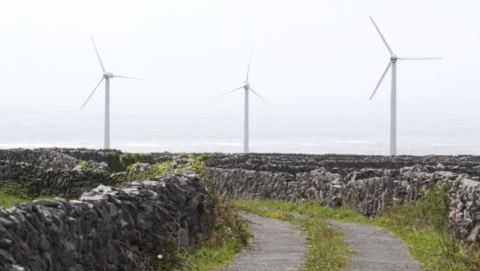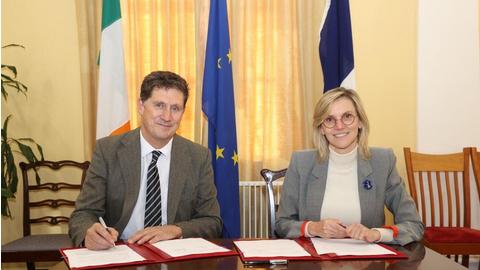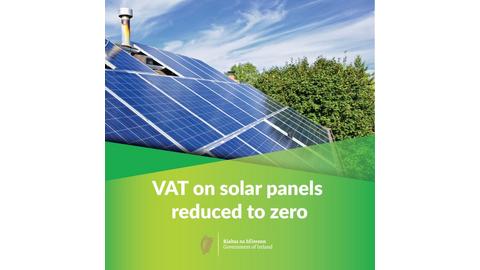Corporate social responsibility
Ireland on track for wind energy to power 3.75 million homes by 2030, Eirgrid FICC Patron says

Target would bring State close to 80% renewables mark contained in action plan.
Ireland is on course to harness enough offshore wind energy to power 3.75 million homes by 2030, Eirgrid has told an Oireachtas committee.
Hitting the highly ambitious target of 5GW of wind power would bring Ireland close to achieving the 80 per cent figure for renewables by that date – a figure contained in the Government’s Climate Action plan.
Eirgrid’s chief executive Mark Foley told the Oireachtas Committee on Environment and Climate Change that wind farms on the east and southeast coast – where there are shallow banks that allowed the turbines to be fixed – were already being developed or were in the planning phase.
The State facility which oversees the national electricity grid had previously modelled for lower figures but Mr Foley told the committee that the plan to generate 5GW of power was realistic.
The committee was discussing future energy needs and challenges with a number of companies and associations involved in the sector.
Speakers also told the committee that there would be increased demand from the grid in future from large energy users, primarily data centres.
Against that micro-generation – or small-scale renewable use – is expected to produce as much as 500MW of energy by 2030, with an additional 1.3GW being produced by onshore wind generation.
Because of the unpredictable nature of renewable power, the committee, chaired by Green Party TD Brian Leddin, was told by several speakers that storage would also become an integral part of the system in future. There are plans to have 1.65GW of battery storage in place by 2030, to compensate for periods where there is little wind, or poor quality of sunshine.
Potential
Beyond 2030, speakers spoke of the huge potential of offshore wind power off the west, northwest and southwest coasts. Both Mr Foley and Pat Keating, chief executive of Shannon Foynes Port Company, told the committee that the potential of the energy harnessed could be as high as 80GW, which would be produced mainly for export.
However, the time span for the development is longer as the generation will rely on floating turbines (because of the deep water of the Atlantic Ocean) as well as very extensive new infrastructure along the Atlantic seaboard, especially in key ports.
Mr Keating said that Shannon Foynes had channel depths of 32 metres and had the capacity to handle more than 11 million tonnes per annum.
He said the objective of the port company was to develop the Shannon estuary as a marshalling port, and operations and maintenance port for the offshore wind energy industry.
“Large-scale port infrastructure together with associated supply chain infrastructure is required if Ireland and indeed Europe, is to meet its climate action targets by 2030 and net zero by 2050.
Investment
“The scale of industrialisation to achieve this should not be underestimated,” he said. He said that up to €100 billion might be needed for floating wind power investment, with €12 billion in supply change investment required to locate in the harbour.
“The development of an offshore renewable energy assembly facility at a new Foynes deepwater terminal will cost an estimated €350 million and will be completed by 2028.
“It will allow the deployment of floating wind projects by the end of this decade.”
He said that the facility allied to the ESB’s ambitions for renewable energy at Moneypoint would mean that there would be two large-scale facilities, fully operational in the Shannon estuary by 2030.
Mr Keating warned, however, that investment would need to be made quickly in order to ensure that there were no lags or delays. “I ask today for the [authorities] to put floating technology front and centre right now. If its not being put in place until 2030, we will not be right until 2038 or so,” he said.


